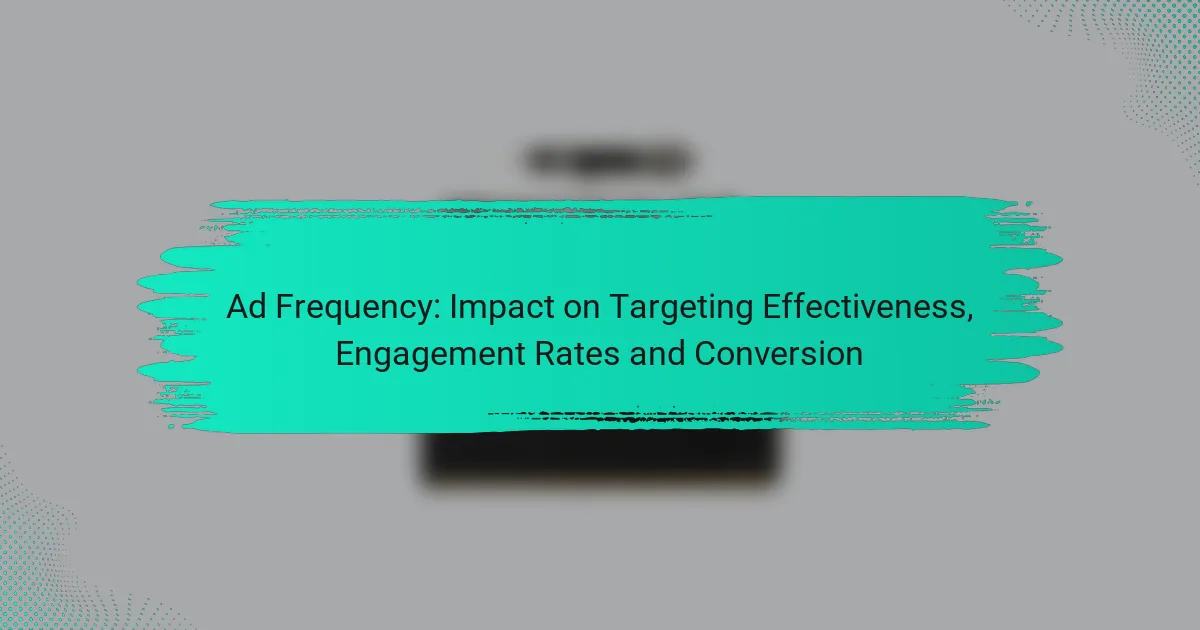Retargeting techniques are essential for re-engaging potential customers who have shown interest in your brand. By delivering tailored ads and personalized content, businesses can significantly increase conversion rates and foster customer retention, ultimately driving repeat business and enhancing overall ad efficiency.

What are effective retargeting techniques for conversion increase?
Effective retargeting techniques focus on re-engaging potential customers who have previously interacted with your brand. By utilizing tailored ads and personalized content, businesses can significantly boost conversion rates and enhance customer retention.
Dynamic product ads
Dynamic product ads automatically showcase products that users have previously viewed or expressed interest in. This technique utilizes data from user behavior to create personalized ad experiences, increasing the likelihood of conversion. For example, if a customer browses shoes on an e-commerce site, they will see ads featuring those specific shoes across various platforms.
To implement dynamic ads, ensure your product catalog is up-to-date and integrated with your advertising platform. This allows for real-time updates and relevant product displays, which can lead to higher engagement and sales.
Sequential retargeting
Sequential retargeting involves showing users a series of ads that tell a story or guide them through the purchasing process. This technique helps to build familiarity and trust over time, which can lead to increased conversions. For instance, a user might first see an ad introducing a product, followed by ads highlighting customer testimonials, and finally, a special offer to encourage purchase.
When using sequential retargeting, carefully plan the sequence of messages to ensure they flow logically. Monitor performance metrics to adjust the sequence based on user engagement and conversion rates.
Personalized email campaigns
Personalized email campaigns target users based on their previous interactions with your brand, such as abandoned carts or recent purchases. By sending tailored messages that address specific user needs or interests, businesses can effectively drive conversions. For example, an email reminding a customer of items left in their cart can prompt them to complete their purchase.
To maximize the effectiveness of personalized emails, segment your audience based on behavior and preferences. Use compelling subject lines and clear calls to action to encourage users to engage with your content.
Lookalike audience targeting
Lookalike audience targeting allows businesses to reach new customers who share similar characteristics with their existing customer base. By leveraging data from current customers, companies can create ads that appeal to potential buyers who are likely to convert. This method is particularly effective for expanding reach and acquiring new customers.
To implement lookalike targeting, ensure you have a well-defined audience profile based on your best customers. Use advertising platforms that offer lookalike audience features, and continuously refine your audience based on performance data.
Cross-device retargeting
Cross-device retargeting enables businesses to reach users across multiple devices, ensuring a cohesive advertising experience. Many customers switch between devices during their shopping journey, so it’s essential to maintain brand visibility regardless of the platform. For example, a user might see an ad on their smartphone and later on their desktop, reinforcing their interest in your product.
To effectively implement cross-device retargeting, utilize tracking technologies that can identify users across devices. Ensure your ads are optimized for different screen sizes and formats to enhance user experience and drive conversions.

How can retargeting improve customer retention?
Retargeting enhances customer retention by reminding previous visitors of their interest in products or services, encouraging them to return and complete their purchases. This technique leverages user data to create personalized experiences that resonate with past interactions, fostering loyalty and repeat business.
Engagement through personalized content
Personalized content is crucial for engaging returning customers. By utilizing data from previous interactions, businesses can tailor ads to reflect individual preferences, such as showcasing items left in a shopping cart or suggesting complementary products. This targeted approach can significantly increase the likelihood of conversion.
For instance, if a customer previously viewed running shoes, retargeting ads can feature those shoes alongside related gear, such as socks or fitness trackers. This not only reminds the customer of their interest but also enhances their shopping experience by offering relevant options.
Incentives for returning customers
Offering incentives can effectively motivate customers to return. Discounts, loyalty points, or exclusive access to new products can create a sense of urgency and value. For example, a 10% discount on their next purchase can encourage customers to finalize transactions they previously abandoned.
Additionally, limited-time offers can prompt quicker decision-making. Businesses should ensure that these incentives are clearly communicated in retargeting ads to maximize their impact.
Behavioral segmentation strategies
Behavioral segmentation involves categorizing customers based on their past actions, which allows for more effective retargeting. By analyzing user behavior, businesses can identify different segments, such as frequent buyers, occasional visitors, or those who have abandoned carts.
For example, frequent buyers may respond well to loyalty rewards, while those who abandoned carts might benefit from reminder ads featuring their selected items. Tailoring retargeting efforts to these segments can lead to higher engagement and retention rates.

What are the benefits of retargeting in display advertising?
Retargeting in display advertising offers several key benefits, including enhanced brand visibility, improved conversion rates, and better customer retention. By targeting users who have previously interacted with your brand, you can effectively remind them of your products and encourage them to complete their purchases.
Increased brand recall
Retargeting significantly boosts brand recall by keeping your brand top-of-mind for potential customers. When users see your ads multiple times across different platforms, they are more likely to remember your brand when making purchasing decisions.
For example, a user who visits an online store but leaves without buying may see ads for that store on social media or other websites. This repeated exposure reinforces their memory of the brand and can lead to a higher likelihood of return visits.
Higher ROI on ad spend
Retargeting typically results in a higher return on investment (ROI) for ad spend compared to traditional advertising methods. Since retargeted ads are shown to users who have already expressed interest, the chances of conversion are significantly increased.
Businesses can expect to see ROI improvements ranging from 50% to 100% or more, depending on the industry and the effectiveness of the retargeting strategy. Focusing on high-intent users can maximize the efficiency of your advertising budget.
Improved customer journey mapping
Retargeting allows for better mapping of the customer journey by providing insights into user behavior and preferences. By analyzing which ads users engage with, businesses can tailor their marketing strategies to meet customer needs more effectively.
Utilizing analytics tools can help identify patterns in user interactions, such as which products are frequently viewed but not purchased. This data can inform future campaigns and enhance overall customer experience, leading to increased satisfaction and loyalty.

What metrics should be used to measure retargeting success?
To effectively measure retargeting success, focus on key performance indicators that reflect engagement and conversion outcomes. The most relevant metrics include click-through rate (CTR), conversion rate, and cost per acquisition (CPA), each providing insights into different aspects of your retargeting campaigns.
Click-through rate (CTR)
Click-through rate (CTR) measures the percentage of users who click on your retargeting ads after seeing them. A higher CTR indicates that your ads are resonating with your audience, which is crucial for driving traffic back to your site. Aim for a CTR of 1-3% for effective campaigns, but this can vary based on industry and ad quality.
To improve CTR, ensure your ads are visually appealing and relevant to the audience’s previous interactions. A/B testing different ad creatives and messaging can help identify what works best for your target demographic.
Conversion rate
The conversion rate reflects the percentage of users who complete a desired action, such as making a purchase or signing up for a newsletter, after clicking on your retargeting ad. A strong conversion rate indicates that your retargeting efforts are successfully encouraging users to take action. Typical conversion rates range from 2-5%, but this can vary widely depending on the industry and the effectiveness of your landing pages.
To enhance conversion rates, ensure that your landing pages are optimized for user experience and aligned with the messaging of your ads. Clear calls to action and streamlined checkout processes can significantly boost conversion rates.
Cost per acquisition (CPA)
Cost per acquisition (CPA) measures the total cost of acquiring a customer through your retargeting efforts. This metric helps you understand the financial efficiency of your campaigns. A lower CPA indicates a more cost-effective strategy, while a higher CPA may suggest the need for adjustments in targeting or ad spend. Aim for a CPA that aligns with your profit margins and customer lifetime value.
To manage CPA effectively, monitor your ad spend closely and adjust your targeting parameters based on performance data. Consider reallocating budget to the best-performing ads or audiences to maximize return on investment.

What prerequisites are needed for effective retargeting?
Effective retargeting requires a solid foundation of data collection and user tracking. This ensures that you can accurately identify and engage users who have previously interacted with your brand.
Robust tracking setup
A robust tracking setup is essential for successful retargeting. This involves implementing tools like cookies, pixels, or tracking scripts that monitor user behavior across your website and other digital platforms. By collecting data on user interactions, you can create targeted ads that resonate with specific audience segments.
Consider using platforms such as Google Analytics or Facebook Pixel to streamline your tracking efforts. These tools allow you to gather insights on user behavior, such as pages visited and time spent on your site, which can inform your retargeting strategies.
To ensure your tracking is effective, regularly audit your setup for accuracy. Check that your tracking codes are firing correctly and that data is being captured as intended. This will help you avoid common pitfalls, such as targeting users who have already converted or missing out on potential leads.



